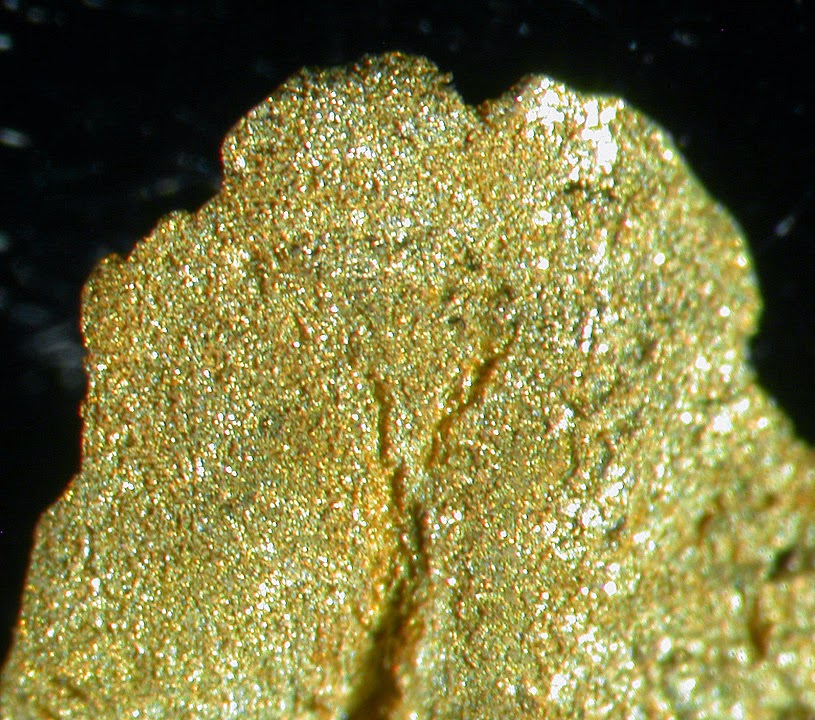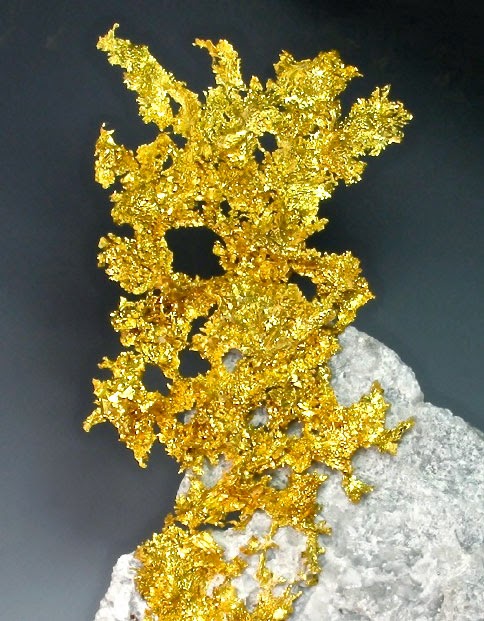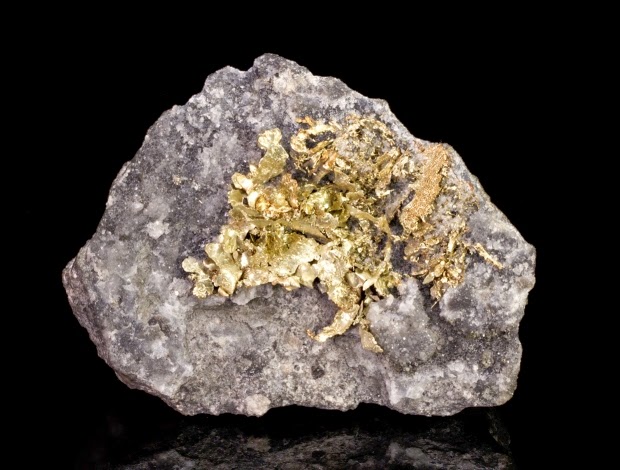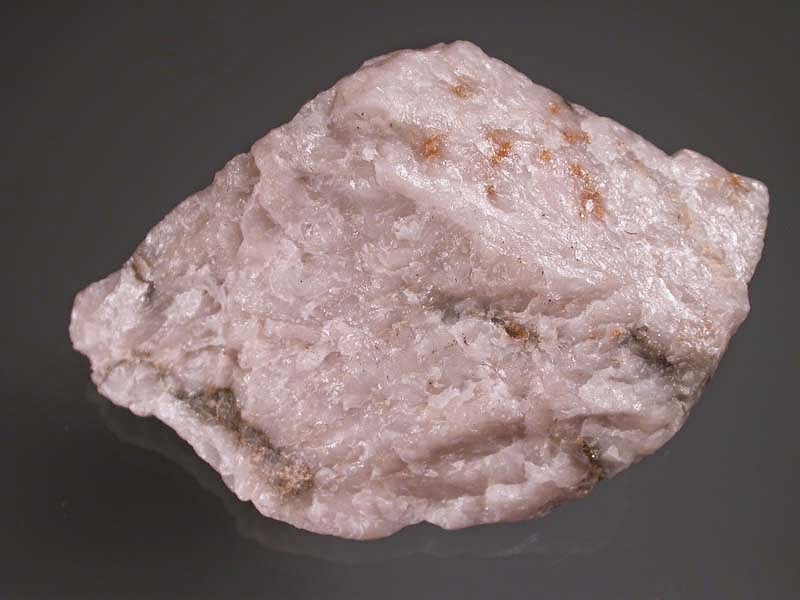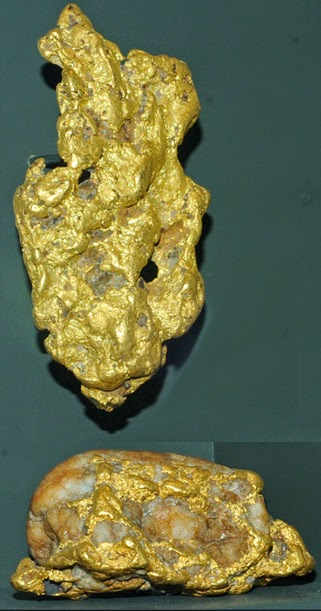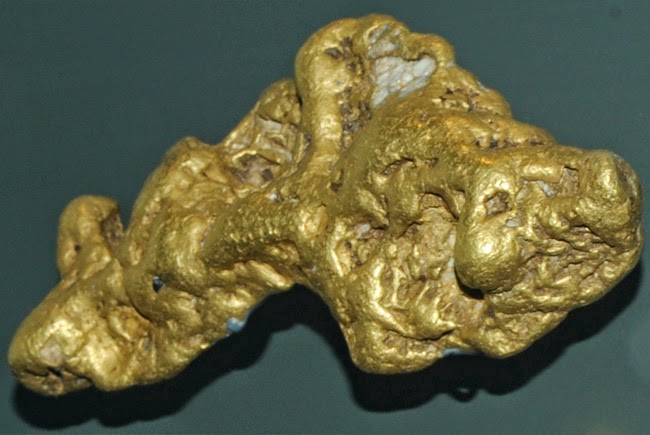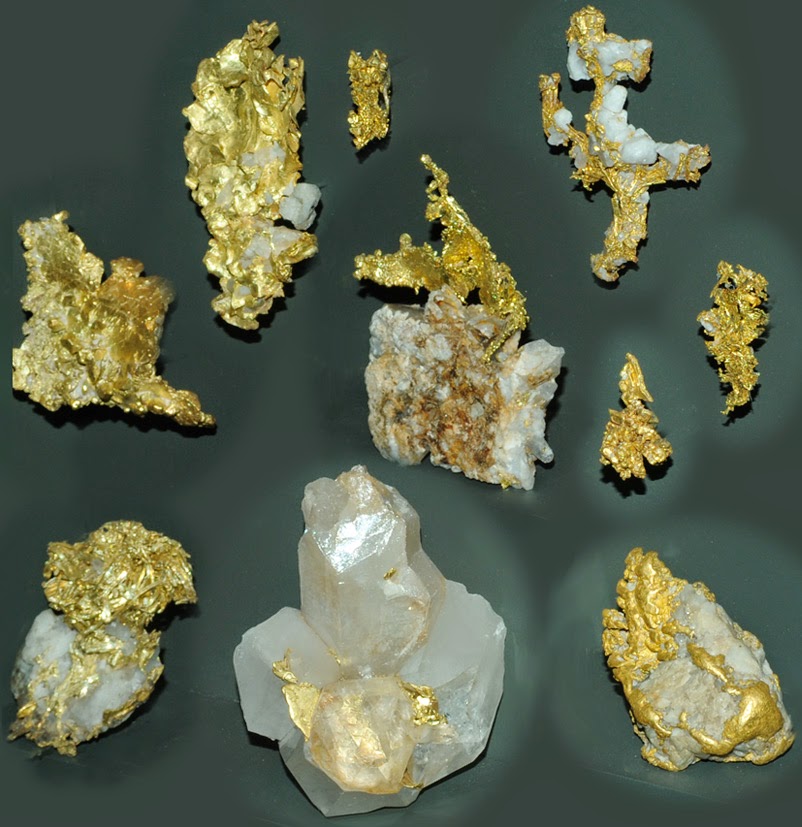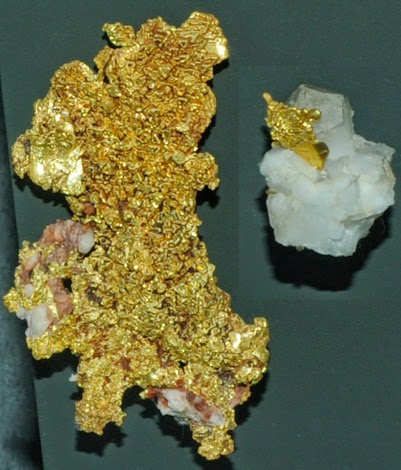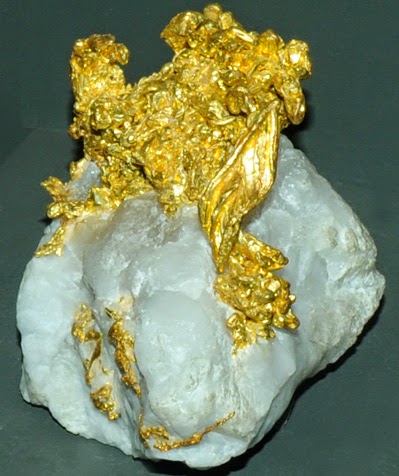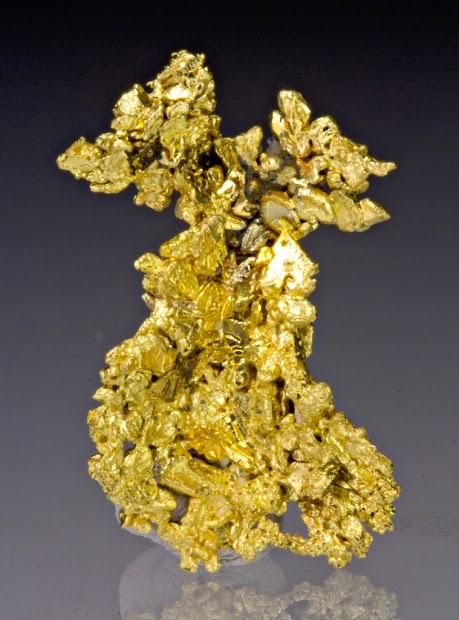
Chemical Formula: Au
Locality: Sierra Nevada Mountains, Nome, Alaska and many other places in the world.
Name Origin: Anglo Saxon, of uncertain origin.
Gold is a chemical element with symbol Au (from Latin: aurum) and atomic number 79. It is a bright yellow dense, soft, malleable and ductile metal. The properties remain when exposed to air or water. Chemically, gold is a transition metal and a group 11 element. It is one of the least reactive chemical elements, and is solid under standard conditions. The metal therefore occurs often in free elemental (native) form, as nuggets or grains, in rocks, in veins and in alluvial deposits. It occurs in a solid solution series with the native element silver (as electrum) and also naturally alloyed with copper and palladium. Less commonly, it occurs in minerals as gold compounds, often with tellurium (gold tellurides).
Gold’s atomic number of 79 makes it one of the higher atomic number elements that occur naturally in the universe, and is traditionally thought to have been produced in supernova nucleosynthesis to seed the dust from which the Solar System formed. Because the Earth was molten when it was just formed, almost all of the gold present in the Earth sank into the planetary core. Therefore most of the gold that is present today in the Earth’s crust and mantle is thought to have been delivered to Earth later, by asteroid impacts during the late heavy bombardment, about 4 billion years ago.
Gold resists attacks by individual acids, but it can be dissolved by aqua regia (nitro-hydrochloric acid), so named because it dissolves gold into a soluble gold tetrachloride cation. Gold compounds also dissolve in alkaline solutions of cyanide, which have been used in mining. It dissolves in mercury, forming amalgam alloys; it is insoluble in nitric acid, which dissolves silver and base metals, a property that has long been used to confirm the presence of gold in items, giving rise to the term acid test.
Physical Properties
Cleavage: None
Color: Yellow, Pale yellow, Orange, Yellow white, Reddish white.
Density: 16 – 19.3, Average = 17.64
Diaphaneity: Opaque
Fracture: Hackly – Jagged, torn surfaces, (e.g. fractured metals).
Hardness: 2.5-3 – Finger Nail-Calcite
Luminescence: Non-fluorescent.
Luster: Metallic
Magnetism: Nonmagnetic
Streak: yellow
Photos :

